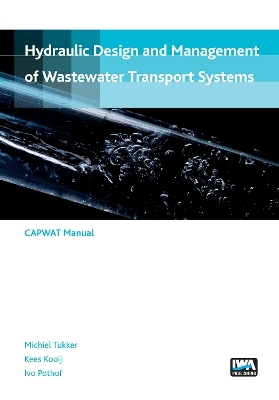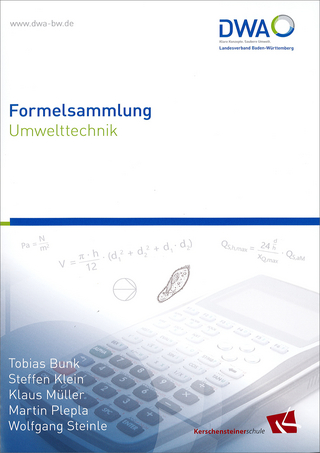
Hydraulic design and management of wastewater transport systems
IWA Publishing (Verlag)
978-1-78040-782-1 (ISBN)
This manual provides a compilation of all the hydraulic knowledge that is necessary for designing a wastewater transport system and to manage it operationally. The wastewater transport system is the link between the collection and treatment of the wastewater and the collection system includes, among others, the gravity flow sewage system from the house (or consumer) and service connection through street and main sewers up to the suction basins. The transport system, for which this manual was written, includes the suction basin, the sewage pumping station and the pressure pipelines.
Wastewater transport systems are becoming more complex due to building larger sewage water treatment plants, wastewater being transported over greater distances and increasingly more (and smaller) pipelines connecting to the main sewers. The operation of the pumping stations is largely determined by how the entire system behaves. Insight into this operation is, therefore, crucial for proper design and management.
The central point of the design is to create an independent and safe system with the necessary transport capacity at minimum societal costs. Predominantly, the management aspect focuses on guidelines to maintain the design principles regarding capacity and required energy.
Necessity of the manual; Scope of the manual; Authors and editorial staff; Reader’s guide; Designing wastewater transportation systems; Pipeline design; Boundary conditions; Determining the dimensions of the main; Crossings; Arrangements for the prevention and removal of gas bubbles; Network systems; Designing the pumping station; Boundary conditions; Pump set-up; Components; Determining the operating range and selecting the pump; Receiving basin; Design of air valves; Dynamic effects; Basic assumptions; Water hammer analysis without surge protections; Inventory of solutions for preventing impermissible pressures; Dimensioning water hammer surge protections; Normal and incidental operations; Design aspects for maintaining capacity; Performance indicators; Measuring locations for pressure and flow rate; Provisions for maintaining capacity; Review of the overall system design; Controlling the air in pressure pipelines; Check lists; Commissioning of the system; Boundary conditions; Drafting an acceptance test plan; Benchmark testing; Maintaining hydraulic capacity; Measurements in wastewater transport systems; Criteria for capacity reduction; Analysis of a capacity problem, Appendices, Characteristics of drinking water, Basic equations, Transport losses, Receiving basins and inlet structures, Pumps in pipeline systems, Valves, Water hammer in pipeline systems, Gas bubbles in pipelines, Flow rate pattern during a pump start, Pressure change after draining, Dynamic measurements
| Erscheinungsdatum | 16.03.2016 |
|---|---|
| Verlagsort | London |
| Sprache | englisch |
| Maße | 156 x 234 mm |
| Themenwelt | Technik ► Umwelttechnik / Biotechnologie |
| ISBN-10 | 1-78040-782-3 / 1780407823 |
| ISBN-13 | 978-1-78040-782-1 / 9781780407821 |
| Zustand | Neuware |
| Haben Sie eine Frage zum Produkt? |
aus dem Bereich


